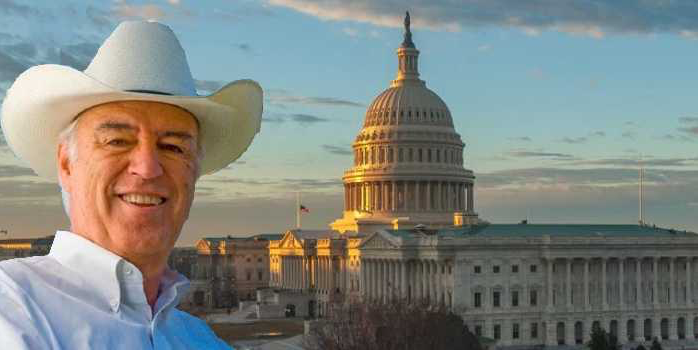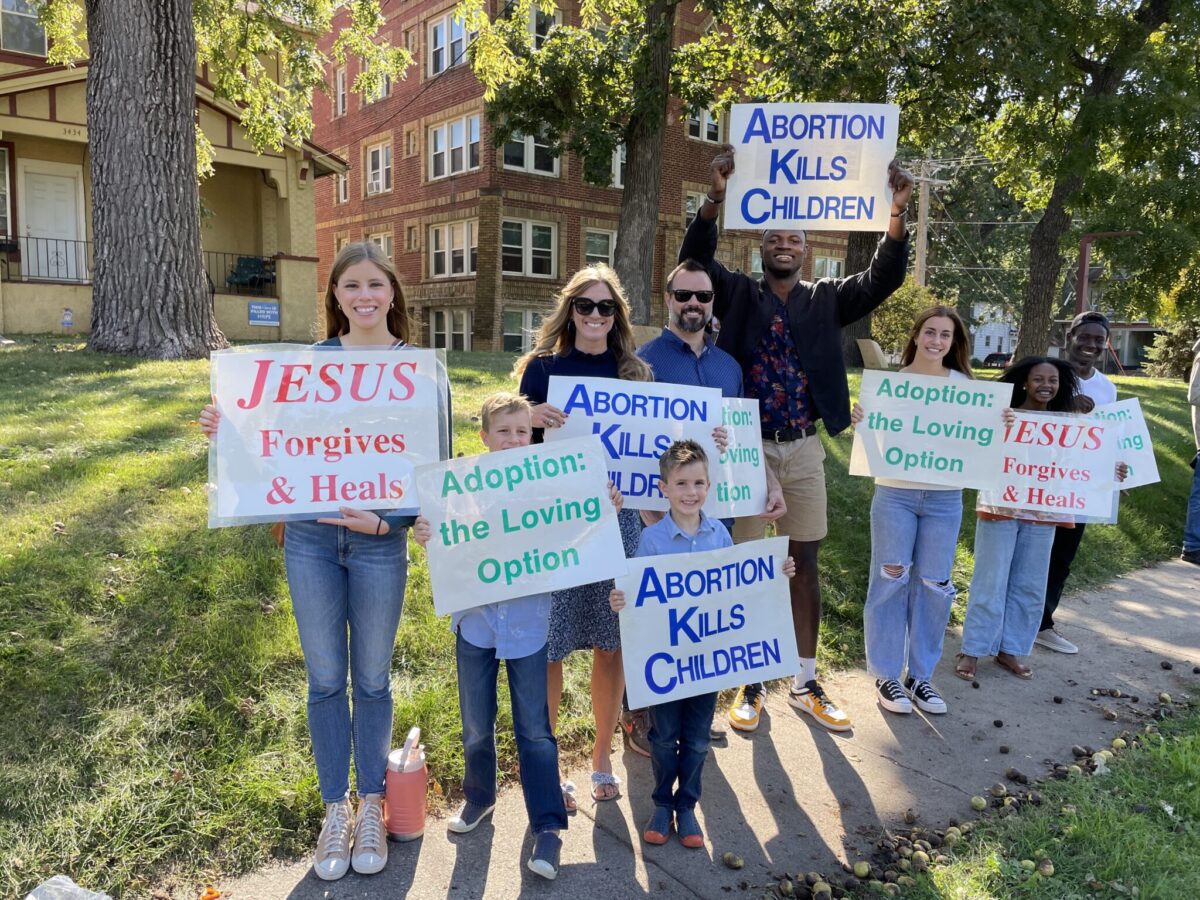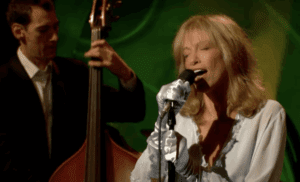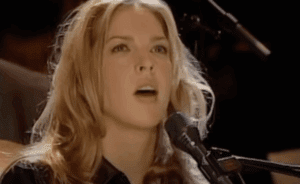By Jim Ross Lightfoot, former Congressional Representative from Iowa’s 3rd District
Dear Maggie,
As a way of introduction, please let me share this true story with you [and Pulse Life Advocates readers]. The primary person in this story is a young lady 19 years old. Her last name has been removed to protect her privacy.
Life looks a whole lot different from this end of the spectrum. Having ridden this old rock we call Earth around the Sun 87 times come September 27, I have witnessed a lot of water running under the bridge. Making the trip all the way since from being a kid living on a good Iowa farm where the water came from a hand pump, we listened to a battery powered radio at night while a kerosene Aladdin lamp lighted the room and today’s “indoor plumbing” was a walk down a few boards to keep you out of the mud to a little house on the end. It only smelled good in the wintertime and during a cold Iowa winter you learned to always be second. A Sears or Montgomery Wards catalogue was the Charmin of the day. Much has changed in all the years since. Not all of it for the better.
An old man’s opinion
Without a doubt, the worst of the changes is the attitude supporting abortion as an acceptable form of birth control. In this old man’s opinion, it is a barbaric approach, backed by millions of dollars to a few big companies and over $2 billion in 3 years to Planned Parenthood and others operating the abortion mills around our country.
The voice we never hear in this discussion is that of the unborn child. They will pay the price for the mother’s mistakes without the opportunity for anyone to hear their tiny voice. That’s why I believe Helen’s story is important to tell.
God’s Waiting Room is an identity I use for the op-ed pieces I write. It fits our discussion today. As I sit in God’s Waiting Room, the word “mistake” reverberates around me. In the political world each side accuses the other of lying. The most often heard word is “mistake.” In fact the entire so-called Pro-Choice movement is based on the premise of correcting a “mistake.”
A “playmaker” issue
Abortion is a highly emotional issue and is manipulated by political advisors to gather people in support of abortion as well as drive a wedge between candidates opposing abortion and their supporting voting bloc. Feelings run high on both sides of the issue. Abortion has been a “playmaker” issue for years in our political system.
However, in all the debate and political noise, one voice is silent and never mentioned: the voice of the child that will or will not be aborted. What do you think that child might say? Perhaps Helen’s story will provide some insight to what that unborn child is crying at the top of their voice. Something they want people to hear and understand.
Helen’s story …
Take your mind all the way back to late December or early January 1938. Eighteen-year-old Helen works as a nursing assistant in a hospital where a young man, who fell from a bridge while doing construction work and broke his back, is a patient. They became close during his extended hospital stay.
Once he recovered enough to leave the hospital, the two started dating. During that late December/early January time, the two dated several times. At some point during their courtship, the lovemaking resulted in a grave mistake: Helen became pregnant.
Knowing she could not financially raise a child, Helen faced one of the most serious choices of her young life: “What do I do?”
‘Mr. Mistake’ is born
Was the new baby growing in her womb a mistake? Yes. Was she going to make another mistake and have the baby killed or aborted in politically correct language? The answer to that question was no. After all, it was not the child’s fault it had been created. It was a mistake she and her lover had made. Helen chose to carry the new baby full term to birth and then place it up for adoption.
On September 27, 1938, Mr. Mistake took his first breath of life in the Florence Crittenden Home for Unwed Mothers on Sioux City, IA. After he had been cleaned up and wrapped in a warm, soft blanket, he was handed to Helen to hold. She named him Roger. However, their time together was very brief, just a few minutes. The nurses then whisked Mr. Mistake away, and Helen knew she would never see him again.
Had she done the correct thing?
Would her baby end up in a good home? What kind of future would he have? Would he have a family of his own? The questions continued to swirl in her head as Mr. Mistake was moved 95.7 miles south to the Christian Home, a facility specializing in adoption located in Council Bluffs.
During the Great Depression, an extremely hardworking, God-fearing couple grew up, married, and dreamed of building a large family. Despite their efforts, they could not have a child of their own. Eventually, this wonderful couple, who lived on a farm, adopted Mr. Mistake.
Life started off well for Mr. Mistake. He had wonderful parents who loved him with all their hearts. They lived on a farm, where he learned about life and death through raising livestock. Being skilled in mechanical work, electrical work, plumbing, welding, animal husbandry, and bookkeeping is crucial for survival and success if a person wants to be a good farmer or anything else worthwhile. Raising and exhibiting prize livestock were a part of his high school years.
Mr. Mistake has a diverse career background.
He served in the US Army, worked as a police officer, spent 20 years at a major radio station, built and managed a successful manufacturing facility, served twelve years in the US Congress, and spent thirteen years as the Vice President of a ballistics forensics company. As Vice President, he helped the company build and establish its product as the world standard in ballistic identification.
While accomplishing this, Mr. Mistake married and has three daughters, a son, and five grandchildren.
Yes, Helen made the right choice. She didn’t blame her mistake on the baby she had created. She allowed Mr. Mistake to live and become the voice of the millions of children we kill each year under the false, selfish guise of “nobody tells me what to do with my body.”
What you have just read is a true story. Mr. Mistake is retired today and lives with his wife of nearly fifty years in White Oak, TX.
I hope Helen’s story will offer you more encouragement to fight the battle for that unborn child whose voice is difficult to hear.
God bless,
Jim Ross Lightfoot, aka ‘Mr. Mistake’
Everything is coming to a head. We’ve reached the point in our country’s spiritual journey when a wide swath of our culture cheers the assassination of a leading pro-life warrior. A husband. A dad of a three year old daughter … and a one year old son.
Thousands and thousands of pro-abortion zealots cheered the violent death of this saint, as Cardinal Timothy Dolan characterized Charlie Kirk.
In this sobering moment of our country’s spiritual journey, let us remember St. Paul’s warning in Ephesian’s 6:12:
“For we do not wrestle against flesh and blood, but against principalities, against powers, against the rulers of the darkness of this age, against spiritual hosts of wickedness in the heavenly places.”
This upcoming October 5th Life Chain Sunday is an apt time for us to ponder St. Paul’s words. Can you sacrifice 90 minutes of your life to pray with like-minded people on behalf of our unborn brothers and sisters?
Charlie Kirk sacrificed the rest of his life for simply speaking the Truth: that we’re made in God’s image; that human life is precious from the instant of conception; that abortion is the ugliest evil Satan ever foisted upon mankind.
The evil of abortion is so unspeakable … and yet the same people who cheered Charlie Kirk’s death actually encourage women to “shout their abortion.”
We need prayer more than ever. Spiritual warfare roils our nation. The evil principalities to whom St. Paul refers think they are on the march. They’re not. They are poised to be toppled by an unstoppable force: prayer.
This is our time.
We need you. On October 5th, from 2 to 3:30PM, we shall launch an army of prayers to stand up for the little guy and gal in the womb. We will pray for our deluded brethren who have been duped by Satan into believing that abortion is essential to women’s freedom.
No woman or man made of flesh and blood is beyond redemption. But time is short. Everything is coming to a head. We need more people praying than ever on October 5th, 2 to 3:30PM.
Details:
The Life Chain’s host location is the Des Moines Fellowship Church at 950 35th Street in Des Moines, IA 50312 (two blocks South of University on 35th Street).
Pick up your signs there.
Then we’ll line up on the South side of University Avenue on either side of 35th Street … and … either side of 31st Street at Kingman Blvd.
This is our time to end abortion. It is not possible without the power of prayer.
Never done this before? Perfect. THIS is the year for you to make a difference. Pulse is counting on you.
Two prominent Americans used national platforms to describe the martyred Charlie Kirk in shockingly opposing language.
Alexandria Ocasio Cortez used her position in the House of Representatives to call Kirk a bigot before he has even been buried. Ms. Ocasio Cortez vigorously opposed a Congressional resolution honoring Mr. Kirk, saying:
”The majority proceeded with a resolution that brings great pain to the millions of Americans who endured segregation, Jim Crow, and the legacy of bigotry today. [Kirk’s] rhetoric and beliefs were ignorant, uneducated and sought to disenfranchise millions of Americans, far from the ‘working tirelessly to promote unity’ asserted by the majority in this resolution.”
By contrast, New York Cardinal Timothy Dolan had a completely different take on Kirk’s career. He went on Fox and Friends and shared this perspective:
“When I heard the tragic news, I said, ‘I wonder who he was.’ And then all of a sudden, this overwhelming, this overwhelming sense of sorrow and kind of renewal. And I thought, I gotta learn about this guy. And the more I learned about him, I thought, this guy’s a modern day Saint Paul. He was a missionary, he’s an evangelist, he’s a hero. He’s one that knew what Jesus meant when he said, the truth will set you free. And to do it, Now, I understand he was pretty blunt and he was pretty direct. He didn’t try to avoid any controversy. He didn’t even try to avoid confrontation. The difference is the way, the mode, the style that he did it, always with respect.”
Bigot or saint?
How can two prominent people view the same person so differently?
What do you think?
By Tom Quiner, Board President, Pulse Life Advocates
“It Had to be You” was written a century ago and has never gone away. It experienced a resurgence in 1989 when featured in the film, “When Harry Met Sally,” as performed by Harry Connick Jr .
There are so many good versions of this song, that it is impossible to pick just one. Let’s begin with Sinatra (above), who includes the front-loaded verse. Too often, singers leave it off, and yet it sets up the whole song:
“Why do I do, just as you say,
why must I just, give you your way,
Why do I sigh, why don’t I try – to forget?
It must have been, that something lovers call fate
Kept me saying: “I have to wait”
I saw them all, just couldn’t fall – ’til we met.”
Nice set up to the song’s theme: “It had to be you.” And what a nice expression of the soul-searing pull of a monogamous relationship, so out of vogue these days.
Some reading this series may note my love of songs from yesteryear. And yet a majority of the songs I’m touting were written well before I was born. That’s because these songs are timeless, often characterized as ‘standards.’
Harry Connick Jr. sings “It Had to be You.”
Even Elton John acknowledged that the vast majority of songs coming out these days are “disposable music.” He wrote about the songwriter’s dream of someday writing a standard in his song from 1995, “Bitter Fingers”:
“And there’s a chance that one day
You might write a standard lads,
So churn them out quick and fast,
And we’ll still pat your backs
‘Cause we need what we can get to launch another dozen acts.”
Yes, there are good songs coming out these days, but they seem pitiably few and far between. If you’ve heard a love song that moved you recently, be sure to share it with me.
In the meantime, take a few minutes to delight in “It Had to be You,” with lyrics by Gus Kahn and music by Isham Jones.
Harry Nillson sings “It Had to be You”
I’m particularly fond of Harry Nilsson’s version of the song. The quirky Mr. Nilsson recorded an incredible album of standards in 1973, titled “A Little Touch of Schmilsson in the Night.” He features three of the songs on my list of the 52 Greatest Love Songs Ever” on this wonderful concept album. My wife and I have listened to it a hundred times at least. (Nilsson used an alternate verse, written by Kahn as a joke, in his rendition. Take a listen. It’ll make you laugh.)
By the same token, if you delight in babies, born and unborn, take a minute and make a gift to Pulse Life Advocates. Help us save lives by expanding our pro-life educational outreach into the culture. This series recognizes that love is the antidote to abortion. Help us spread the love.
Pulse executive director, Maggie DeWitte, received a hostile response to her letter mourning the violent death of Charlie Kirk.
“I want to know if you sent a message like this when the lives of Minnesota politicians were gunned down in their own homes. Did you send a message like this for EVERY SCHOOL SHOOTING that has happened. Why the heavy partisanship? Why pick out one man who advocated for guns?”
Did you know this quote from him In April 2023, Kirk stated, “It’s worth it to have a cost of, unfortunately, some gun deaths every single year, so that we can have the Second Amendment to protect our other God-given rights.
Please be aware of who you are worshipping… because it’s supposed to be God and LIFE, not Charlie Kirk who said gun deaths each year are worth it!”
For the record, we don’t ‘worship’ Charlie Kirk. We honor him.
For the record, we have written on school shootings as recently as two weeks ago.
For the record, Charlie Kirk was a national figure, a potential future president in the eyes of some, in contrast to the murdered state legislators in Minnesota. Their deaths are no less significant in the eyes of God and their family, but with less political impact nationally. We certainly mourn their deaths along with the deaths of all born and unborn people whose lives end in violence.
The real issue
That’s not what’s really bugging her, or a host of other naysayers who push back against our pro-life positions online.
In this case, what’s bugging her are guns. We understand. Honorable people can have different views on gun regulation. But it’s a different issue than abortion. And it’s not the focus of Pulse Life Advocates.
On the issue of Life, Charlie Kirk was a unique champion. Along with Kristan Hawkins, the keynote speaker at our upcoming November 22nd Christmas Gala, he was one of the best defenders of Life on college campuses. Said Kirk:
“We allow the massacre of a million and a half babies a year under the guise of women’s reproductive health. We are allowing babies to be taken away and discarded every single year, just saying they are not humans.”
“You are using dehumanizing language, saying ‘ohh it’s an embryo’; no, that’s a baby, made in the image of God, deserving protection. It is never right to justify the mass termination of people under the guise of saying that they are unwanted. That’s how we get Auschwitz, that’s how we got the greatest horror of the 20th century.”
It takes courage to make a statement like that.
It takes courage to step into the metaphorical lion’s den (college campuses) where you may not be surrounded by actual snarling lions, but rather smug, privileged (and often snarling) college students with ill will towards you.
Charlie was chased out of restaurants, heckled, and the recipient of repeated death threats. But that didn’t stop him from standing up for the little guy, our unborn brothers and sisters, in the face of unrelenting attacks by pro-abortion bullies.
We’re not bothered by this writer’s focus on guns. What’s notable is her lack of acknowledgment that a young husband and dad was murdered for simply speaking out on an important issue in the public square.
For simply exercising his First Amendment rights.
Where is the empathy?
Across the nation, we’ve been stunned not only by the lack of empathy toward the martyred Charlie Kirk, but the delight over his death so widespread on the Progressive Left.
An example:
@jessbritvich I wish we lived in a world without violence. If we did no one would know Charlie Kirk’s name.
Clearly, talking points were quickly disseminated on social medial platforms to be spewed out by an army of sociopaths being cultivated on our college campuses. So many said the same thing, it’s as if they’ve been coached. A lack of empathy characterizes the sociopath.
No doubt, the political right has it’s share of whack jobs. But the Left is particularly cursed with people who wish harm upon people with whom they disagree. In fact, they are very honest about it. YouGov America surveyed Republicans and Democrats a few days ago. They asked:
“Do you generally consider it to be acceptable or unacceptable for a person to be happy about the death of a public figure they oppose?”
77% of Republicans said it always unacceptable compared to only 38% Democrats.
These results aren’t that surprising. For the past ten years, how often have we heard that Donald Trump and anyone who voted for him are Nazis, fascists, deplorable, irredeemables, bigots, racists, sexists, chumps, or worse?
Pervasive violent rhetoric
How often have politicians on the Left employed violence-tinged rhetoric?
Former President Biden said, “time to put Trump in the bulls-eye.”
Former Representative, Dan Goldman, said Trump is so “dangerous” to Democracy that he “has to be eliminated.”
Nancy Pelosi:”I just don’t even know why there aren’t uprisings all over the country, and maybe there will be … “
A couple of their acolytes took them up on it and tried to kill then-candidate Trump.
Chuck Schumer went to the footsteps of the Supreme Court and bellowed,
“I want to tell you Gorsuch, I want to tell you Kavanaugh: You have released the whirlwind, and you will pay the price. You won’t know what hit you.”
And a disturbed young man took him seriously and traveled all the way across the country to carry out Schumer’s directive, before getting cold feet at the last minute.
The abortion issue corrupted the political Left. By embracing a political issue that asserts that an unborn human life not only has no intrinsic value, it goes further by sanctioning termination when that life is inconvenient.
It is only a matter of time until that mindset progresses to the natural next stage, that a right-to-life is contingent upon holding the correct progressive political positions.
That day has come.
We saw it erupt on October 7th, 2023, when Hamas butchered Israeli civilians attending a music fest and a significant swath of Left-leaning Americans cheered (below).
We see the anti-life sentiment growing exponentially with the shocking celebratory outburst by American progressives at Charlie Kirk’s assassination.
Too many apparently view the Charlie Kirks of the world as enemy combatants, not their neighbor with whom to have a good-natured conversation on the issues, as Kirk encouraged.
What a tragic and sobering assassination aftermath.
By Tom Quiner, Board President, Pulse Life Advocates
“You are the promised kiss of springtime, that makes the lonely winter seem long.” These romantic words by the legendary Oscar Hammerstein II launch “All the Things You Are” on a journey to your heart.
Composer Jerome Kern uses a classic jazz chord progression and haunting melody to perfectly complement the metaphorical verse.
Kern and Hammerstein are American songwriting royalty. They collaborated on the classic musical, “Show Boat,” which featured the legendary songs “Old Man River” and “Can’t Help Lovin’ That Man.”
“All the Things You Are” was the best of their love songs. I love Carly Simon’s interpretation of the song (top of page). Her contralto voice allows her to sing in a lower register than the typical soprano or mezzo soprano voices you’re used to. For me, Carly’s voice works very well on this song.
Kern collaborated with a different lyricist on an even better love song, one which cracks my top ten. But you’ll have to wait a few months to learn what it is. I hope you can handle the suspense!
Too sentimental?
As I pointed out in an earlier post, Hammerstein’s lyrics tug on the heartstrings by plying very sentimental lyrics. Sentimentality walks a fine line between being dreamy and passionate vs. saccharine and sappy. Some of his critics, including his friend and protégé, Stephen Sondheim, suggest Hammerstein was too often guilty of the latter.
Interestingly, this is Hammerstein’s only song to make my list, despite the fact that he wrote a ridiculous number of great love songs in his storied Broadway career, including:
If I Loved You (from Carousel)
A Wonderful Guy (South Pacific)
People Will Say We’re in Love (Oklahoma)
Some Enchanted Evening (South Pacific)
Do I Love You Because You’re Beautiful (Cinderella)
Younger Than Springtime (South Pacific)
I Have Dreamed (The King and I)
Very few songwriters have written even a single song as good as any of these, much less dozens, as is the case with Hammerstein. By the time my list is done, you’ll note that there is no shortage of contemporary songwriters who did not place a song on my list, including Elton John, Billy Joel, Bob Dylan, Taylor Swift, Paul Simon, and Joni Mitchel, to name a few.
Good love songs are hard to write
It’s no reflection on their talent, because they have collectively written a boatload of songs that people will be playing fifty years from now. It’s just that good love songs are really hard to write.
“All the Things You Are” is a perfect example. Every word flows so beautifully. Every single note Kern wrote seems like the obvious note. It’s as if God simply planted the completed song in the hearts of Kern of Hammerstein, and that all they had to do was let it out.
 The first part may be true, but the ‘letting it out’ part doesn’t begin to put into perspective the labor required to craft and polish this work of art.
The first part may be true, but the ‘letting it out’ part doesn’t begin to put into perspective the labor required to craft and polish this work of art.
Hammerstein’s style was emotional honesty compared to the witty cleverness honed by the likes of Cole Porter, Lorenz Hart, or Ira Gershwin. Emotional honesty can sometimes descend into mushiness, but I believe Hammerstein hit a home run with “All the Thinks You Are.”
If you’ve been following this series of the 52 Greatest Love Songs Ever, you know that the whole point is that love is the antidote to abortion. The best love songs soften your heart. They take the focus off of yourself, opening your heart to think of someone else.
A different perspective
View “All the Things You Are” from a slightly different perspective: Think about the potential of the baby in her mom’s womb. From the instant of her conception, someone, somewhere is thinking about her in this way:
“You are the angel glow that lights the star,
The dearest things that I know are what you are.”
It could be her mom or dad or grandparents. It could be her future husband, whose subconscious unknowingly longs to meet this little girl someday and make a life with her and raise a family.
Love songs make you think and feel that way. That’s why we need more of them. That’s why Pulse Life Advocates believe this yearlong series is worth it. Help us spread the love. Share this post. And if you’re enjoying this series, support us financially. Every gift, regardless of size, helps.
Dear Fellow Pro-Lifer:
I am sick over the tragic, violent death of one of America’s most vocal pro-life warriors, Charlie Kirk.
I’m not only sick over the death of a wonderful young family man who went into the lion’s den, college campuses, to make the case for life.
I’m sick over the growing heartlessness manifesting itself on our nation’s political Left.
I’m sick when certain members of the Left cheered the assassination attempts on President Trump.
I’m sick that videos flooded TikTok just a couple of weeks ago expressing disappointment that President Trump hadn’t died after fake rumors surfaced suggesting as much.
I’m sick that pro-choice college students at the University of Montana actually laughed when they heard the news of Charlie’s assassination.
What’s wrong with these people?
They don’t value human life in the womb, so why should they value human life after birth?
They don’t.
So, here is the question: In the face of the growing threats to pro-lifers who dare to stand up for the unborn in public forums, should we pack up our placards and go home?
Should we pull the plug on our vast pro-life educational outreach and let the bullies win?
Should we turn our backs on our unborn brothers and sisters and let them fend for themselves?
HELL. NO.
I am so upset as I type these words, that I am struggling to avoid the profane.
So let me tell you what Pulse is going to do, and we need YOUR help.
On Sunday, October 12, 1PM, we’re heading to the footsteps of the Iowa Capitol at which point I will make a speech as part of President Trump’s America 250 project, honoring next year’s celebration of the signing of the Declaration of Independence.
We’ll have a film crew there.
We need a crowd. Will you join us? Will you join me?
I have a lot to say, but my remarks will be whittled down to a concise five minutes.
Can you join us?
Please say yes. I’ll send you details as they are finalized.
Charlie Kirk, rest in peace. We love you. May God bless you and your family. May God bless America.
Sincerely,
Maggie DeWitte, Executive Director, Pulse Life Advocates
Hamlet poses the portentous question, “to be or not to be?” in one of Shakespeare’s greatest plays. He offers the question in the context of whether to go on living. By contrast, songwriting hall of famer, Ted Koehler, poses the same question in the context of love:
“To be or not to be? Let our hearts discover.”
This delightful love song answers the question with a resounding yes:
“Let’s fall in love,
Why shouldn’t we fall in love?
Our hearts are made of it,
Let’s take a chance,
Why be afraid of it?”
Love is the antidote to abortion
“Let’s Fall in Love” ranks an impressive #23 in our countdown of the 52 Greatest Love Songs Ever. This series posits that Love is the antidote to abortion. We need to listen to more love songs, songs that make us think beyond ourselves. Songs that soften our hearts and strengthen our humanity.
The great Harold Arlen (“Stormy Weather,” “Over the Rainbow”) adds a simply delightful, happy melody, that would even put a smile on the face of a grouch.
So the interesting line in the lyric above is, “our hearts are made of it,” suggesting our hearts are made of love.
In this context, I believe Kohler suggests that our humanity, our ability to feel and interact with the world, is animated by the spark of divine love that brought us into existence. Perhaps he really refers to our souls, which hunger for love.
He whimsically adds, “Why be afraid of it?”
As I scoured YouTube for different presentations of “Let’s Fall in Love,” the usual suspects popped up. Krall. Sinatra. Cole. Diana Krall (top of page) is far and away my favorite. For starters, she includes the opening verse which is often deleted by other singers.
Krall is a jazz artist, and this is a tune on which jazz artists can really cut loose. Take a listen. Her piano chops are just as good as her incredible vocal chops. A good singer makes a song sound natural, effortless, and Ms. Krall excels in this category. The middle section of the song (the “to be or not to be” part) is not so simple, but she makes it sound simple.
The same goes for the great Nat King Cole, who slows the song down into a lovely ballad. (For the record, Cole was also an incredible jazz pianist.)
Nat King Cole sings “Let’s Fall in Love”
So to the question, to be or not to be, this song jubilantly responds YES, let’s fall in love! YES, let’s embrace life! There’s nothing to be afraid of!
And if you agree with these great songwriters, take a moment to subscribe to this blog. And if you’re able, make a gift to enable Pulse Life Advocates to continue spreading a pro-life gospel of love.
Next week showcases a classic song written by songwriting royalty in 1939 and performed by a recent inductee into the Rock n Roll Hall of Fame.
In light of the tragic shooting at the Annunciation Catholic School in Minneapolis, a question resounds from coast to coast: Why do so many school shootings take place?
One side, the abortion party, presents a singular explanation: guns. But this rings hollow as a stand-alone explanation.
Minneapolis has fairly strict gun laws. It appears the shooter purchased his weapons legally. He said he targeted this school because it was a ‘gun-free zone.’
But even more, the percentage of households that own guns is pretty consistent with historical benchmarks according to Gallup polls:
- 49% of households owned guns in 1959
- 51% of households owned guns in 1993
- 48% of households owned guns in 2025
If guns were the root cause of the problem, why have shootings spiked the past dozen years compared to these earlier periods?
Consider:
- 444 school shootings occurred from 1999 thru 2012,
- but 1954 school shootings occurred from 2013 thru 2025 (which doesn’t even include the Minneapolis shootings), more than quadrupling the number of the preceding 13 years.
[Source: Statista.]
The role of guns certainly can’t be discounted, but something else is clearly at work here.
The pro-life side of the aisle’s position
The pro-life side of the aisle sees the problem as more complex than guns alone. Ultimately, we’re concerned that a growing number of young people don’t find any meaning in their lives.
Why? Not sure, but it seems like we would do our children and communities a big favor if we did find out, the sooner the better. Researchers are at work on it.
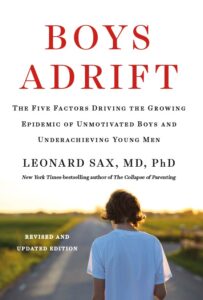 For example, the Forge Men’s conference brought in author, pediatrician, and national speaker, Dr. Leonard Sax, earlier this year. He provided persuasive evidence that smart phones and social media are toxic to our kids, warping their very sexuality while cultivating anxiety and depression. Many in the medical community suggest the cure is to just find your child the right pill to take, something Dr. Sax warns against.
For example, the Forge Men’s conference brought in author, pediatrician, and national speaker, Dr. Leonard Sax, earlier this year. He provided persuasive evidence that smart phones and social media are toxic to our kids, warping their very sexuality while cultivating anxiety and depression. Many in the medical community suggest the cure is to just find your child the right pill to take, something Dr. Sax warns against.
[For a deeper dive into the five factors driving the growing epidemic of unmotivated boys, check out his book, “Boys Adrift.”]
But there’s more to it than that.
Parents don’t take their kids to church like they used to. Forty-two percent of U.S. adults attended church on a weekly basis in 2000, compared to 38% in 2011, compared to 30% by 2023. [Per Gallup.]
Does Godlessness matter?
Could a lack of God in kid’s lives have anything to do with their rudderless lives? How could it not? If we are made in God’s image, we are special. Life has meaning. St. John Henry Newman expressed it well:
“God has created me to do Him some definite service. He has committed some work to me which He has not committed to another. I have my mission. I may never know it in this life, but I shall be told it in the next.”
If one doesn’t believe in God, life’s meaning and mission melts away. If life has no meaning, self-harm spikes at the same time that barriers to hurting others erodes.
The Roe v Wade decision in 1973 institutionalized the belief that life has no intrinsic meaning, because your life was contingent on someone else, a denial of the doctrine of fundamental rights espoused in the Declaration of Independence.
In other words, if your conception was inconvenient, your life hung in the balance, dependent upon whether your parents were willing to allow you to live … or not.
A culture adrift
Sixty-five million abortions later, we’ve formed a culture adrift. Young people are desperate to find some meaning in their lives. They’re confused by a culture that suggests abortion is a moral good, and that in fact women should joyfully “shout their abortion.”
Pulse believes that the mysterious miracle taking place in a women’s womb over a span of 40 weeks gives us a glimpse into the meaning of life. If only young people could get a closer look at the amazing journey each human being undertakes at the beginning of their life! Thanks to the Iowa Legislature, now our kids will have a chance to learn more about the adventure of life in the womb with the passage of the ‘Baby Olivia’ bill.
If you’re not familiar with the details, Pulse Executive Director, Maggie DeWitte, answers questions posed to us by concerned parents:
***
A closer look at the Baby Olivia Bill
What is the Baby Olivia bill?
Senate File 175 was signed into law by Governor Reynolds on June 6, 2025. This law incorporates provisions related to pregnancy and fetal development into the human growth and development and health curricula provided by school districts, accredited nonpublic schools, charter schools, and innovation zone schools to students enrolled in grades five through twelve.
This law states that students in grades 5th through 12th receive age-appropriate and researched-based human growth and development instruction.
This instruction includes showing a high-definition ultrasound video showing the presence of the brain, heart, and other vital organs in early fetal development. They are also required to show a high-quality, computer-generated rendering or animation, or an ultrasound or other real image, that depicts the humanity of the unborn child by showing prenatal human development, starting at fertilization, noting significant markers in cell growth and organ development throughout every stage of pregnancy.
The law also stipulates that this instruction shall not be provided by an entity that performs abortions, promotes abortions, contracts or subcontracts with an entity that performs or promotes abortion, becomes or continues to be an affiliate of any entity that performs or promotes abortions, regularly makes referrals to an entity that provides or promotes abortions.
When will it be implemented?
This bill becomes the law when signed by the Governor. Governor Reynolds signed this bill into law on June 6, 2025.
The bill states that the state board of education shall adopt rules pursuant to chapter 17A to administer and interpret this law. To date, the rule-making process has not been implemented by the Department of Education.
Does it apply to public and private schools?
This bill applies to school districts, accredited nonpublic schools, charter schools, and innovation zone schools to students enrolled in grades five through twelve.
Criticism
Many in the pro-life movement have had a chance to view the wonderful film produced by Live Action (above). What is the criticism of the film by Planned Parenthood, and does the pro-abortion side have a point?
The criticism of the Baby Olivia video produced by Live Action is that it is not medically or scientifically accurate. The video was produced with the instruction of medical doctors.
Baby Olivia was reviewed and certified to be accurate by licensed OB/GYNs, and it has been endorsed by experts in the field.
Are there other films available for schools to use? Are we able to find them online somewhere?
There are other videos that can be used in addition to the Baby Olivia video; but this video is by far the most accurate. There is another video called Baby Steps produced by American Life League that can be used as well.
Accountability
Can schools just ignore the law? Or is there a process of accountability in place?
Schools that ignore this will be breaking the law. The accountability comes from every Iowan checking with their school district to ensure this law is being enforced. I encourage everyone to contact their local school district and ask what materials and videos they will be using to comply with this newly passed law.
Should pro-lifers be doing anything to support the law? Like, should we be reaching out to our schools?
Yes, everyone should be checking in with their school district to ensure the law is being followed!
***
Thoughts and prayers?
The abortion side of the aisle has descended into excoriating those who express “thoughts and prayers” when a tragedy like the Minneapolis shooting occurs. They demand unspecified action of some sort.
Pulse believes in the power of prayer. We believe the Baby Olivia bill is an answer to one of our prayers. It offers a reasonable starting point to rebuilding a culture of life torn down by the abortion culture.
In the meantime, let us continue to pray on behalf of the victims of gun violence. May God show us the way to peace.


